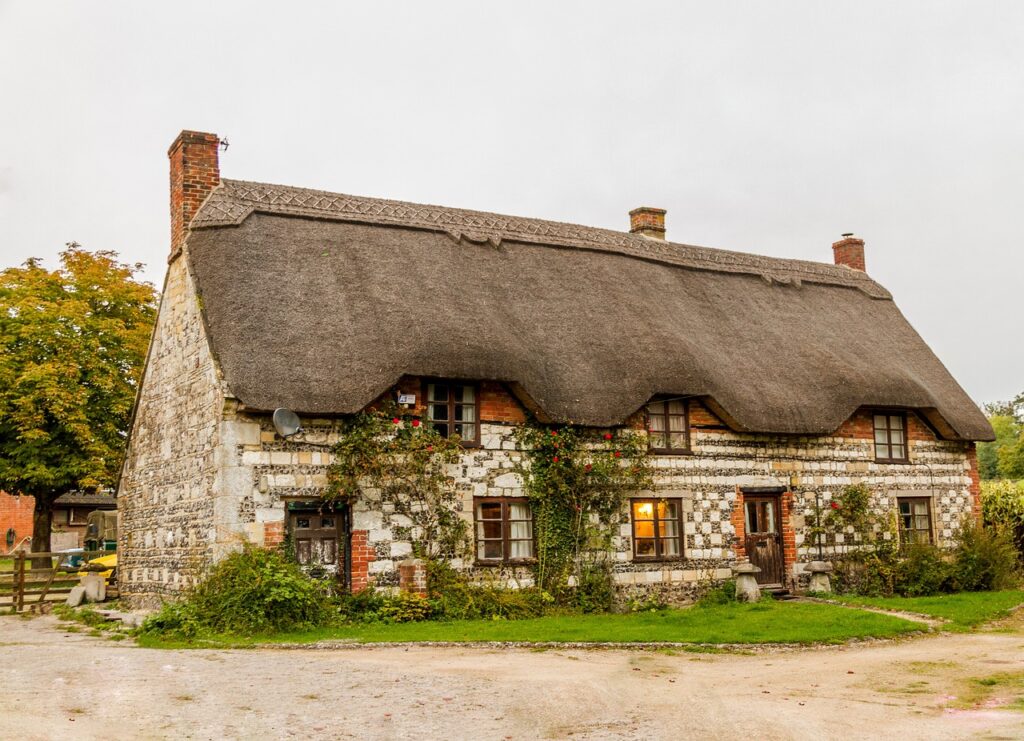Menu
Menu
Thatched properties, epitomizing rustic beauty and historical value, are iconic in the British landscape. Yet, these charming homes come with inherent challenges, particularly the heightened risk of fire. This guide explores the intricacies of managing thatched roof fire incidents and underscores the crucial role of Oakleafe Claims, specialists in insurance claim management and loss assessment, in supporting homeowners through the insurance claims process.

Thatched roofs inherently carry a greater risk of fire compared to standard roofing materials. The combustible nature of materials like straw or reed increases susceptibility to ignition. In instances where fire penetrates the dense, external layers of a well-maintained thatched roof, rapid fire spread is often inevitable.
Key factors contributing to thatch fires include:
Recognizing and mitigating these risks is essential for fire prevention and adherence to building regulations.

Achieving complete fireproofing of thatched roofs is impractical, but certain strategies can markedly diminish fire risk. These strategies encompass the installation of chimney flue thermometers, application of fire retardant solutions, consistent chimney upkeep, and strict adherence to guidelines for using open fires and wood burners.
Preventative Measures:
While open fires in thatched houses are not advisable, if deemed necessary, they should be managed with rigorous safety protocols and suitable fuel types to minimize fire risks.
Obtaining house insurance for thatched properties can pose challenges, given the elevated fire risk. It's crucial to grasp the nuances of insurance terminology and ensure your policy adequately addresses thatched roof-specific concerns.
Once ignited, thatch can burn swiftly, emphasizing the need for prompt fire detection and response. Effective fire safety measures and insurance are vital to mitigate potential financial loss from rapid thatch fires.
Insurance premiums for thatched cottages generally exceed those for regular homes, attributable to the increased fire risk and specialized repair costs. Thorough exploration of the insurance market, including commercial, property, and various liability insurance options, is advised to secure comprehensive coverage.
Case Study: Oakleafe Claims' Intervention in a Thatched Roof Fire Claim
John, a rural England homeowner, faced a catastrophic thatch fire. Overwhelmed by the insurance claims process, he sought the expertise of Oakleafe Claims. Their proficient handling of the insurance claim, including damage assessment and negotiation with the insurance company, was instrumental. Their profound understanding of insurance cover stipulations, including clauses on wear and tear and repair or replacement, was invaluable.
Oakleafe Claims championed John's cause, ensuring the insurance company complied with Financial Conduct Authority regulations, culminating in a fair settlement. This scenario accentuates the importance of professional indemnity insurance and the advantage of having experienced guidance in challenging situations.
Conclusion
The threat of thatched roof fires presents distinctive prevention and recovery challenges for homeowners. Understanding the associated risks, implementing preventive measures, and securing appropriate insurance coverage are pivotal in protecting these enchanting, yet vulnerable, properties. In unfortunate fire incidents, enlisting professional support, such as that offered by Oakleafe Claims, can significantly ease the insurance claims process, reduce stress, and ensure equitable compensation. Staying informed and proactive enables owners of thatched properties to preserve their historical allure while ensuring safety and peace of mind.
If you have been declined while trying to claim on your domestic or commercial insurance, we can help. We can also help with professional services, for example, Brokers, VAR Valuations and Managing Agents.